Advances in electronics technology are making an exciting impact in our oilheat industry. These developments have enabled control manufacturers to put high performance features into residential primary controls. Residential controls are now being made available to you that have features that were previously found only with the expensive primary control units for commercial or industrial applications. Features like valve-on delay (prepurge), burner motor-off delay (postpurge), and interrupted duty ignition are becoming universal. Preignition, limited reset and recycle and alarms contacts are also helping to make today’s controls advanced and powerful tools.
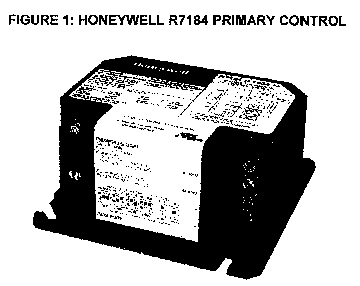
This technical bulletin will discuss some of these important improvements and present a list of descriptive terms to help you become familiar with this new generation of controls. We will include a discussion of the Honeywell R7184 series control, the most recent entry into our marketplace. A handy R7184 quick reference guide for technicians that is included on page 4 will help you become knowledgeable with its operation and features.
IMPORTANT TECHNICAL ADVANCES
As the electronics industry constantly develops, many of its products and techniques have been applied to burner controls. Some of the developments that are key to us are the following:
- Relays have become smaller and more reliable. It is now common to see several relays inside each control, so that the motor, ignitor, and valve may all be controlled by separate relays. Solid state relays are increasingly being used instead of the traditional electromechanical relays.
- Microcontrollers (small computer chips designed specifically to control other electronics) have increased the ability to control the burner’s components separately and with more intelligence. A microcontroller’s software code can easily add control functions and make complex decisions, eliminating the need for large decision-making circuits. Circuits are now needed mostly to provide processor and 24 Volt power, convert sensor signals, and drive relays.
- Timers have developed from being controlled by bimetal switches to being controlled by semiconductors. Now, many different timers can all be running at the same time. Timings are less affected by temperature, vibration, light, line voltage, etc. They can be accurate to within fractions of a second, instead of varying by 10% to over 50% for some traditional controls.
- Flame sensing has progressed from stack mounted bimetal switches to cadmium sulfide sensors (cad cells) and ultraviolet sensors. These sensors can more quickly and accurately sense the flame, and they also have the ability to sense the varying brightness of a flame. Software programming can monitor the rise and fall of a cad cell resistance to better interpret its signal. For instance, the cad cell signal can be smoothed out to help prevent nuisance lockouts. The Honeywell R71 84 can display the cad cell resistance (see the Quick Reference Guide on page 4), ‘so you do not need to use an Ohmmeter. Note: For proper operation, it is important that the cad cell resistance is below 1600 Ohms.
- LED indicators offer you an increasing amount of diagnostic information such as recycling, flame status, or different lockout modes. Indicators like these are making it easier than ever to know what was happening before you arrived at the installation.
- Self checking and system checking to ensure a safe, proper starting and operation of the burner are now standard procedures in microcontroller-based controls.
- Advanced features, both new and borrowed from more expensive controls, are being added to residential controls. In the near future, look for increased use of the reset button, special pump priming procedures, redundant safety features, brownout protection, advanced recycle methods, and other features that will make controls better and your job easier.
GLOSSARY OF CONTROL TERMS
You are probably familiar with the definition of most of the control-related terms below. However, you may not be aware of their benefits or importance to service technicians. As you read on, remember that many of these features were not readily available to us until recently.Beckett Technician’s Quick Reference Guide
Beckett Technician’s Quick Reference Guide
The following service procedures will help you become familiar with the R7184 series primary controls. For control operation, please refer to the basic control functions described below. For further Information, wiring instructions, and troubleshooting, please refer to the Honeywell R7184 Installation Instructions (Honeywell 69.1233).
PRIMING THE PUMP
1. Initiate a call for heat.
2. While the ignition is on, press and release the reset button (hold % sec. or less). If the control has not locked out since its most recent complete heat cycle, the lockout time will be extended to 4 minutes (45 sec. in earlier units), and the ignition will remain on for the entire heat cycle.
3. Bleed the pump until all froth and bubbles are purged. If prime is not established within the extended lockout time, the control will lock out. Press the reset button to reset the control and to return to step 2. Note: The reset button can be held for 30 seconds at any time to reset the control’s lockout counter to zero and send the control to standby.
4. Repeat steps 2 and 3, if needed, until the pump is fully primed and the oil is free of bubbles. Then terminate the call for heat, and the control will resume normal operation.
RESETTING FROM RESTRICTED LOCKOUT
If the control locks out three times in a row without a complete heat cycle between attempts, the lockout becomes restricted in order to prevent repetitious resetting by the homeowner. To reset, hold down the reset button for 30 seconds (until the LED flashes twice).
DISABLE FUNCTION
Any time the motor is running, press and hold the reset button to disable the burner. The burner will remain off as long as the button is held and will return to standby when released.
LED INDICATOR KEY
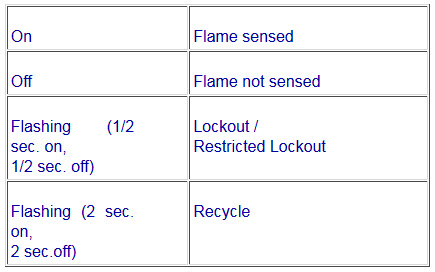
CAD CELL RESISTANCE CHECK
While the burner is firing, and after the ignition has been turned off, press and release the reset button (hold 1/2 sec. or less) to check the cad cell resistance. The LED will flash 1 to 4 times, depending on the cad cell resistance (seethe chart at the right). For proper operation, it is important that the cad cell resistance is below 1600 Ohms.
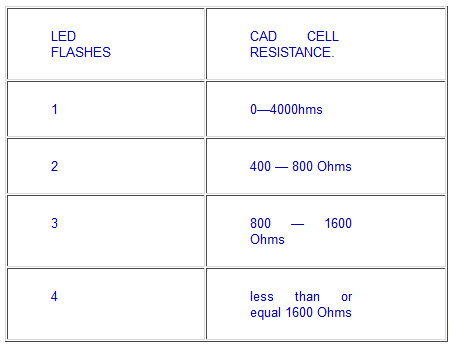
R7184 SERIES CONTROL FEATURES
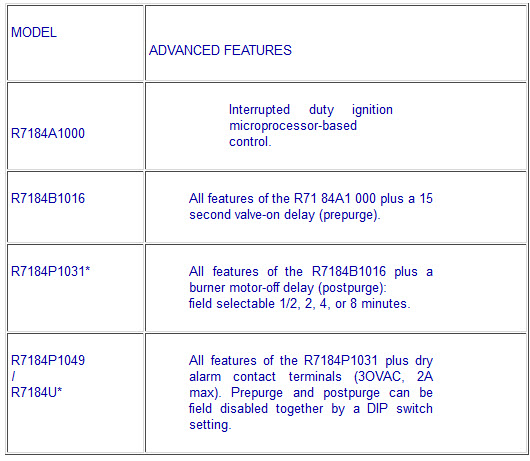
*POSTPURGE TIMINGS MAY BE DIFFERENT.
TYPICAL SEQUENCE OF OPERATION
- STANDBY. The burner is idle, waiting for a call for heat When a call for heat is initiated, there is a 2-6 second delay while the control performs a safe start check.
- VALVE-ON DELAY. As applicable, the ignition and motor are turned on for a 15 second prepurge.
- TRIAL FOR IGNITION (TFI). The fuel valve is opened, as applicable. A flame should be established within the 15 second lockout time (30 second lockout time is available).
- LOCKOUT. If flame is not sensed by the end of the TFI, the control shuts down on safety lockout and must be manually reset If the control locks out three times in a row, the control enters restricted lockout Follow the instructions to the left to reset the control.
- IGNITION CARRYOVER. Once flame is established, the ignition remains on for 10 seconds to ensure flame stability. It then turns off.
- RUN. The burner runs until the call for heat is satisfied. The burner is then sent to burner motor-off delay, as applicable, or it is shut down and sent to standby.
- RECYCLE. If the flame is lost while the burner is firing, the control shuts down the burner, enters a 60 second recycle delay, and then repeats the ignition steps outlined above, if the flame is lost three times in a row, the control locks out to prevent cycling with repetitious flame loss caused by poor combustion.
- BURNER MOTOR-OFF DELAY. If applicable, the fuel valve is closed and the burner motor is kept on for the selected postpurge time before the control returns the burner to standby.
CONTROLS OF THE FUTURE
As electronics and control technology continue to develop, our industry will continue to reap the benefits in the form of new controls and features. Controls will have more high performance features integrated into one package. They will be able to better diagnose the burner and communicate with service personnel. If you have any questions regarding controls or the Honeywell R7184 primary control, please contact R.W. Beckett at 1-800-645-2876 or visit our web site at www.beckettcorp.com .
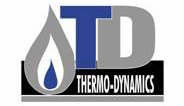
Leave A Comment